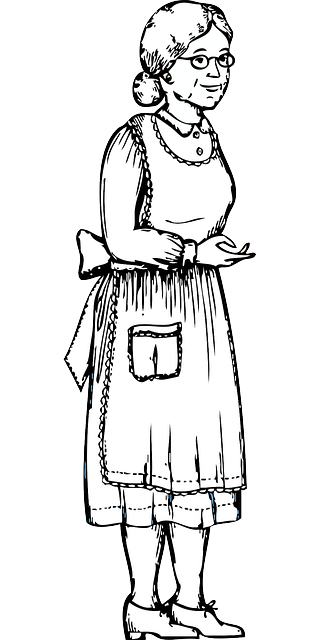According to senior caregiving resources, assessing and mitigating home risks is crucial for creating a safe, comfortable environment for seniors, especially as mobility declines. This involves identifying hazards like loose rugs, poor lighting, uneven floors, and cluttered spaces, implementing solutions like non-slip mats, handrails, and proper lighting, and ensuring accessibility to everyday necessities. Regular safety assessments reduce fall and accident risks, promoting independence, comfort, and overall well-being for seniors.
Creating a safe and supportive home environment is paramount for ensuring the well-being of seniors. This article explores comprehensive strategies to enhance safety, promote independence, and foster social engagement for our aging population. From assessing risk factors and implementing basic safety measures to adapting living spaces and leveraging technology, we delve into essential practices. Additionally, we highlight the importance of building a robust caregiving network and addressing mental health concerns through social connections and cognitive stimulation. Discover how these approaches contribute to senior caregiving resources, ultimately enriching the quality of life for our elders.
Assessing Risk Factors and Creating a Safe Space
Assessing risk factors is a crucial step in creating a safe and comfortable home environment for seniors. Caregivers should conduct a thorough evaluation of the living space, considering potential hazards like loose rugs, uneven floors, or poor lighting. Identifying these risks is essential as it forms the basis for implementing preventive measures. By addressing these issues, caregivers can significantly reduce the chances of falls and other accidents that may lead to injuries, especially in elderly individuals with reduced mobility.
Creating a safe space involves not just physical modifications but also adapting routines and habits. Senior caregiving resources suggest keeping frequently used items within easy reach, ensuring clear pathways for navigation, and installing safety features such as grab bars in bathrooms. Moreover, promoting a sense of security through familiar surroundings and establishing consistent care routines can contribute to the overall well-being of seniors, fostering a peaceful and comfortable living environment.
– Identifying common hazards in the home environment for seniors
Many common hazards in the home can pose significant risks for seniors, often leading to falls, injuries, or even more severe health issues. Recognizing and addressing these potential dangers is a crucial aspect of senior caregiving. Some typical hazards include poorly lit areas, slippery surfaces, uneven flooring, loose rugs, and cluttered spaces. Additionally, simple accessibility issues such as narrow doorways, inadequate grab bars in the bathroom, or high-placement of light switches can create significant obstacles for mobility-impaired seniors.
Senior caregiving resources emphasize the importance of regular home safety assessments to identify these hazards. By implementing preventive measures, such as installing proper lighting, securing rugs, and ensuring easy accessibility, caregivers can significantly enhance the overall comfort and safety of senior living environments.
– Conducting a thorough safety audit of the living space
Creating a safe and comfortable home environment for seniors is paramount, especially as they age and their needs change. A comprehensive safety audit is an essential step in this process. This involves a meticulous assessment of every aspect of the living space, from the condition of flooring and handrails to the placement of furniture and lighting. Senior caregiving resources emphasize that identifying potential hazards early on can significantly reduce the risk of falls and accidents.
During this audit, pay attention to details like loose rugs or uneven floor surfaces, which can be easily remedied but pose significant risks. Ensure adequate lighting in all areas, as good illumination is crucial for navigating safely. Check that essential items like fire alarms and carbon monoxide detectors are functioning properly and in the right places. Moreover, consider the accessibility of everyday necessities—for example, ensuring a well-lit path to the bathroom at night or installing grab bars in the shower.
– Implementing basic safety measures like non-slip mats, handrails, and secure lighting
Creating a safe and comfortable home environment for seniors is paramount, especially as they age and their mobility may decrease. Implementing basic safety measures can significantly reduce the risk of falls and accidents. Non-slip mats at entryways and in high-traffic areas prevent slippery incidents, while handrails on staircases and in bathrooms offer crucial support and stability. Adequate lighting is another vital component; well-lit spaces ensure seniors can navigate comfortably and securely, enhancing their overall sense of safety and independence.
These simple yet effective solutions are valuable senior caregiving resources that families and caregivers can leverage to create a safer home. By incorporating these basic measures, the living space becomes more user-friendly, allowing seniors to move about with confidence and peace of mind, knowing potential hazards have been mitigated.
Creating a safe and comfortable home environment for seniors is a vital aspect of quality senior caregiving. By identifying and mitigating common hazards through a comprehensive safety audit, caregivers can significantly enhance the well-being of their loved ones. Implementing basic yet effective measures such as non-slip mats, handrails, and secure lighting not only reduces the risk of falls and injuries but also promotes independence and peace of mind for seniors. Leveraging these home safety strategies, along with other senior caregiving resources, ensures a nurturing and secure living space tailored to each individual’s unique needs.
